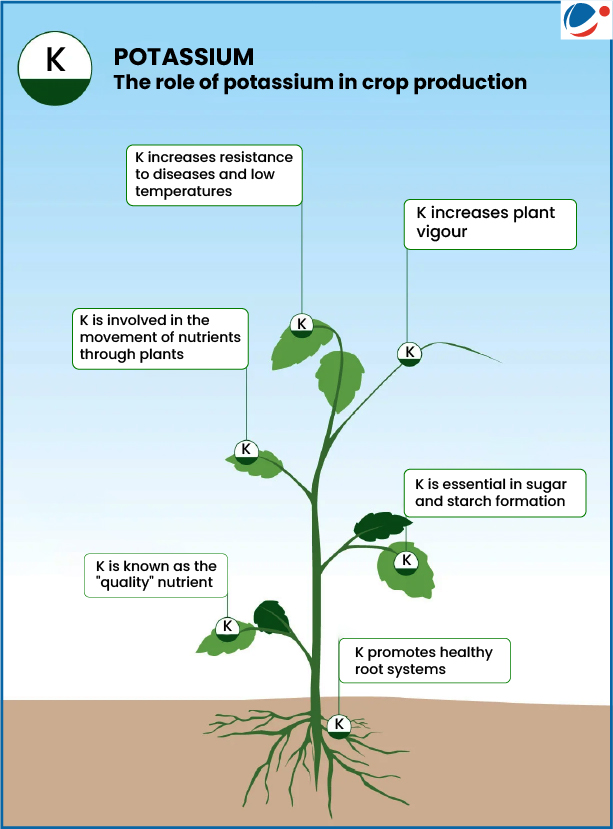
Geological Survey of India (GSI) surveys have also identified potash reserves in Rajasthan, highlighting potential to reduce India’s import reliance.
About Potash
- Definition: Potash is an impure combination of potassium carbonate & potassium (K) salts.
- Principal ore: Sylvinite.
- Uses of Potash:
- Agriculture: Over 90% of potash is utilized as fertilizer, making it one of the three primary nutrients in agriculture, alongside nitrogen and phosphorus, collectively known as N-P-K.
- The ideal nutrient ratio for optimal plant growth is 4:2:1 (N:P: K).
- Purification of water: Potash alum removes hardness of water & has anti-bacterial properties.
- Other industrial Uses: Manufacturing of Glass ceramics, Soaps and detergents, Explosives etc.
- Agriculture: Over 90% of potash is utilized as fertilizer, making it one of the three primary nutrients in agriculture, alongside nitrogen and phosphorus, collectively known as N-P-K.
- Common Types of Potash Fertilizers: Sulphate of Potash (SOP) & Muriate of Potash (MOP).
- Potash Derived from Molasses (PDM): It is 100% indigenous fertilizer under the Nutrient Based Subsidy (NBS) scheme.
- NBS: Provides fertilizer subsidies to farmers based on actual nutrient content (Nitrogen, Phosphorus, Potassium).
- Potash classified as Critical Mineral: Under “The Mines & Minerals (Development and Regulation) Amendment (MMDR) Act, 2023”.
Economic Status of Potash in India
- Deposits: Rajasthan (89%), Madhya Pradesh (5%) and Uttar Pradesh (4%).
- Import: India meets 100% of its Potash requirement through imports (Indian Mineral yearbook 2022).



